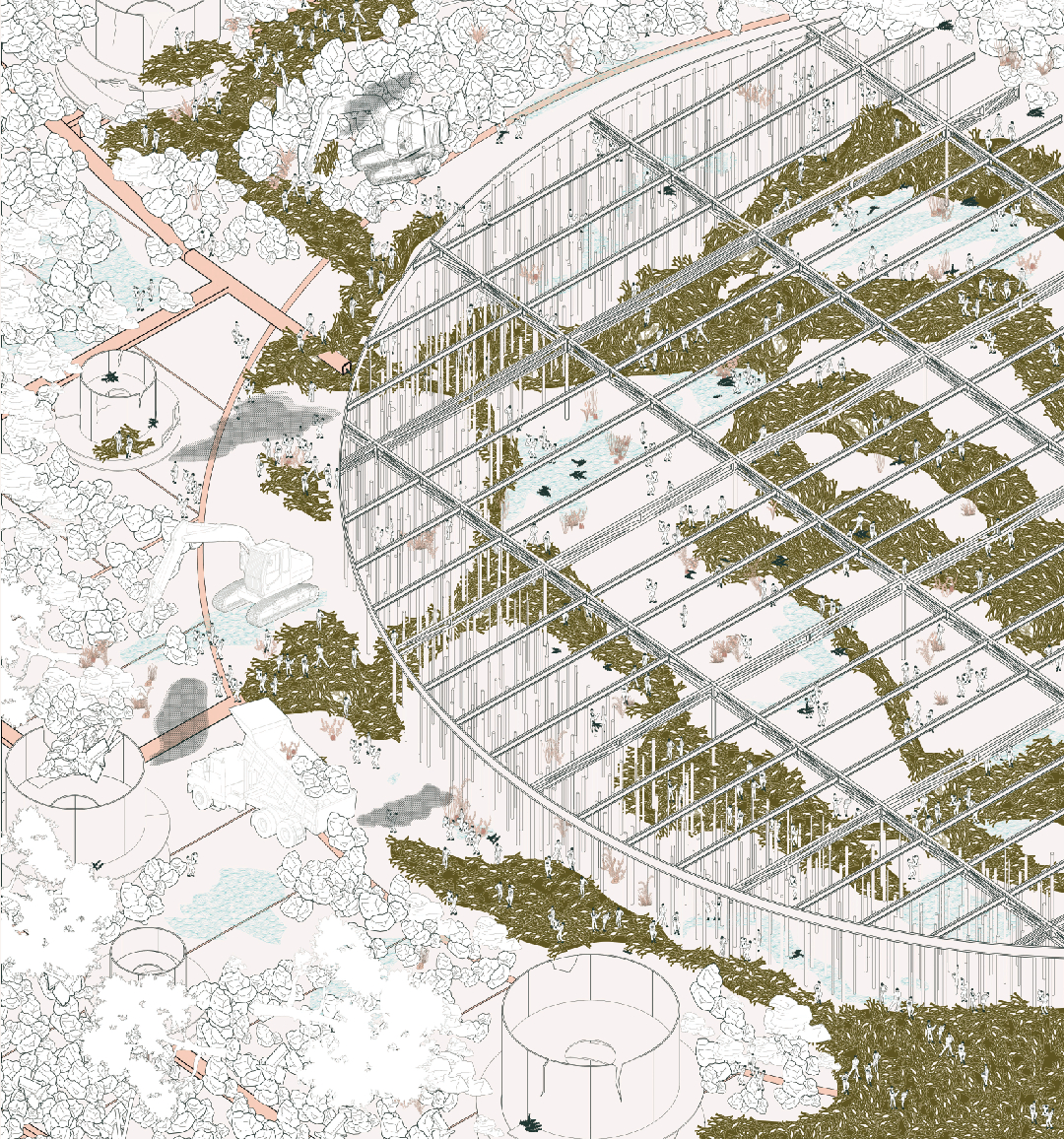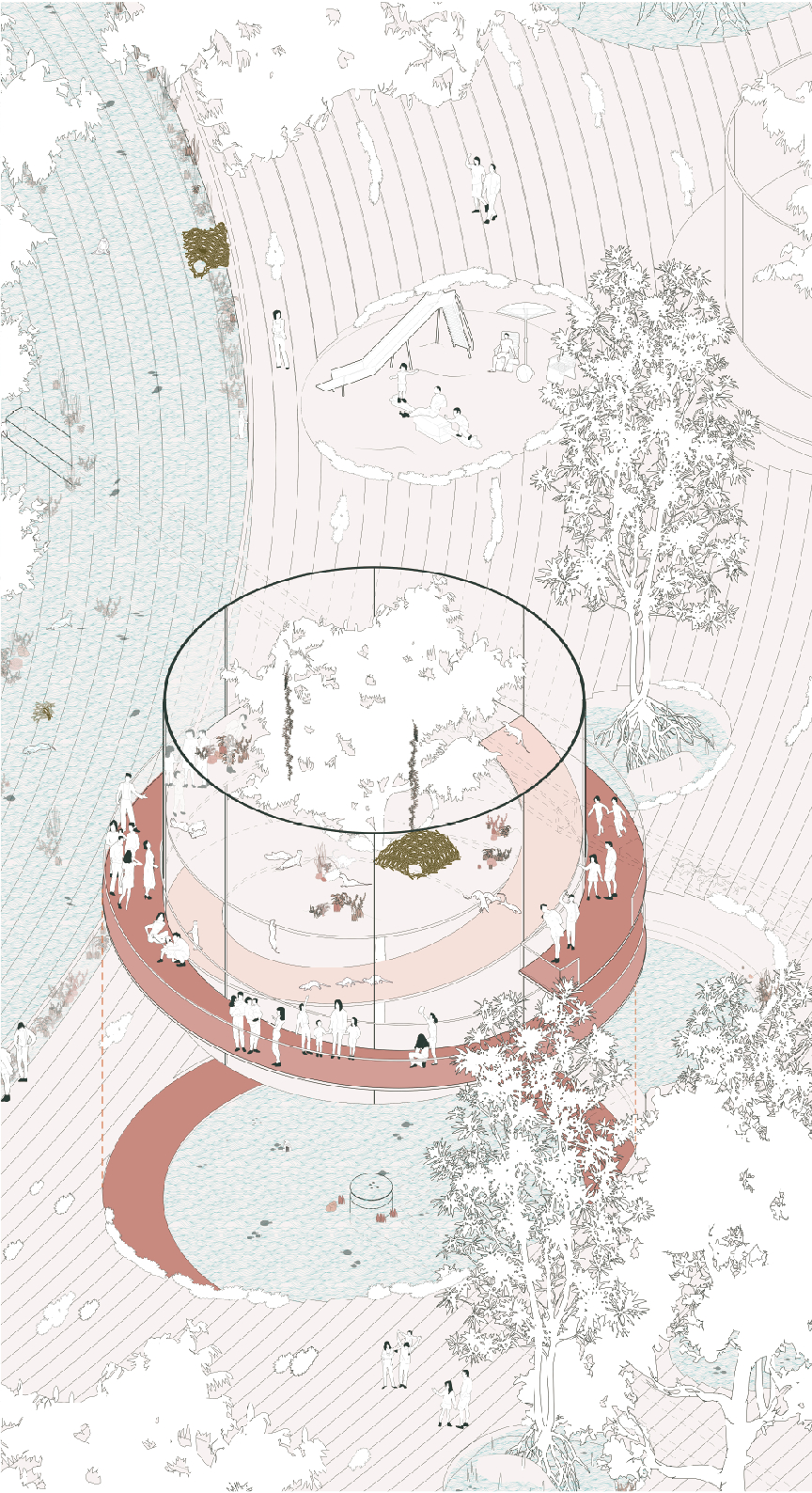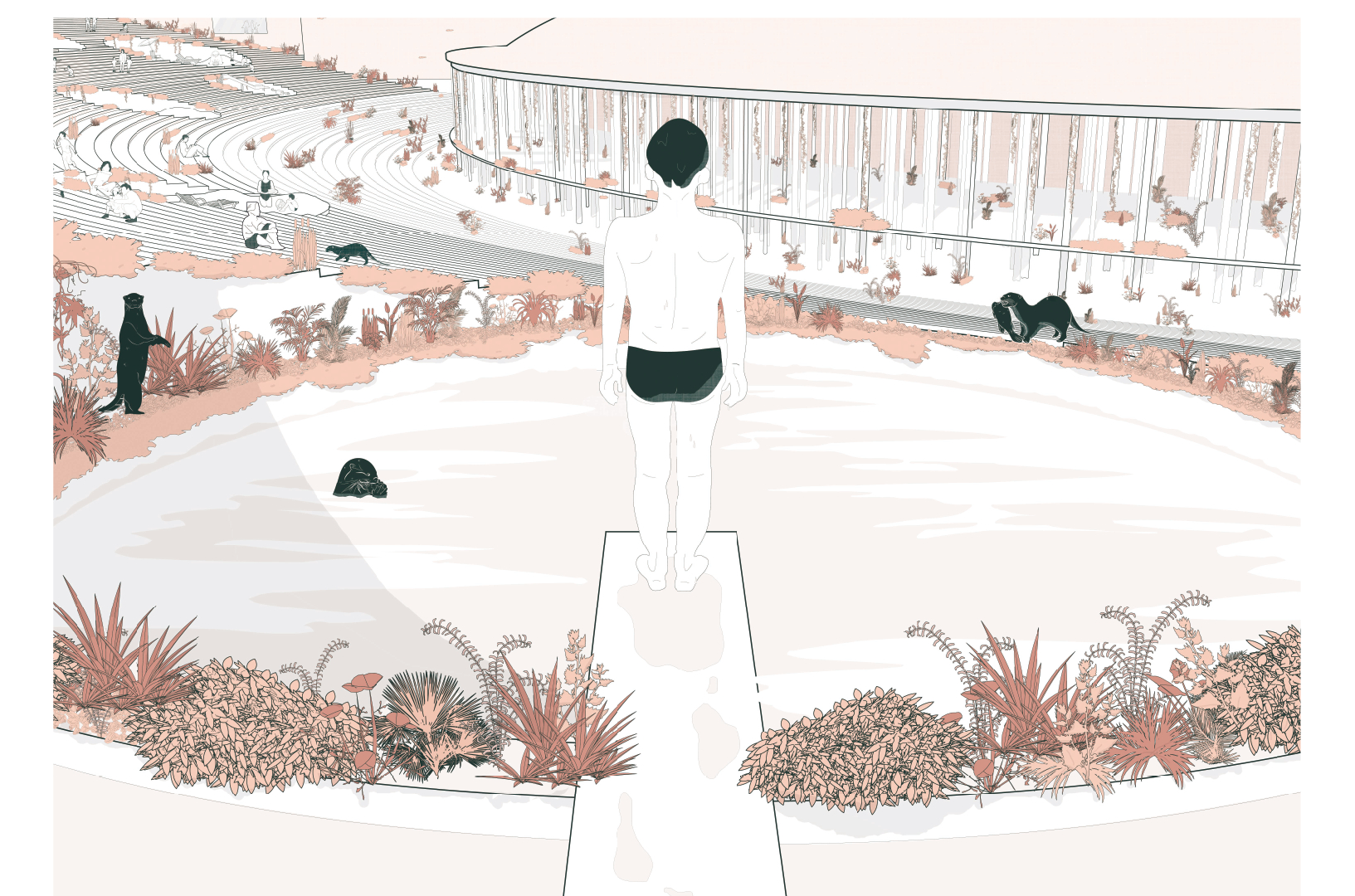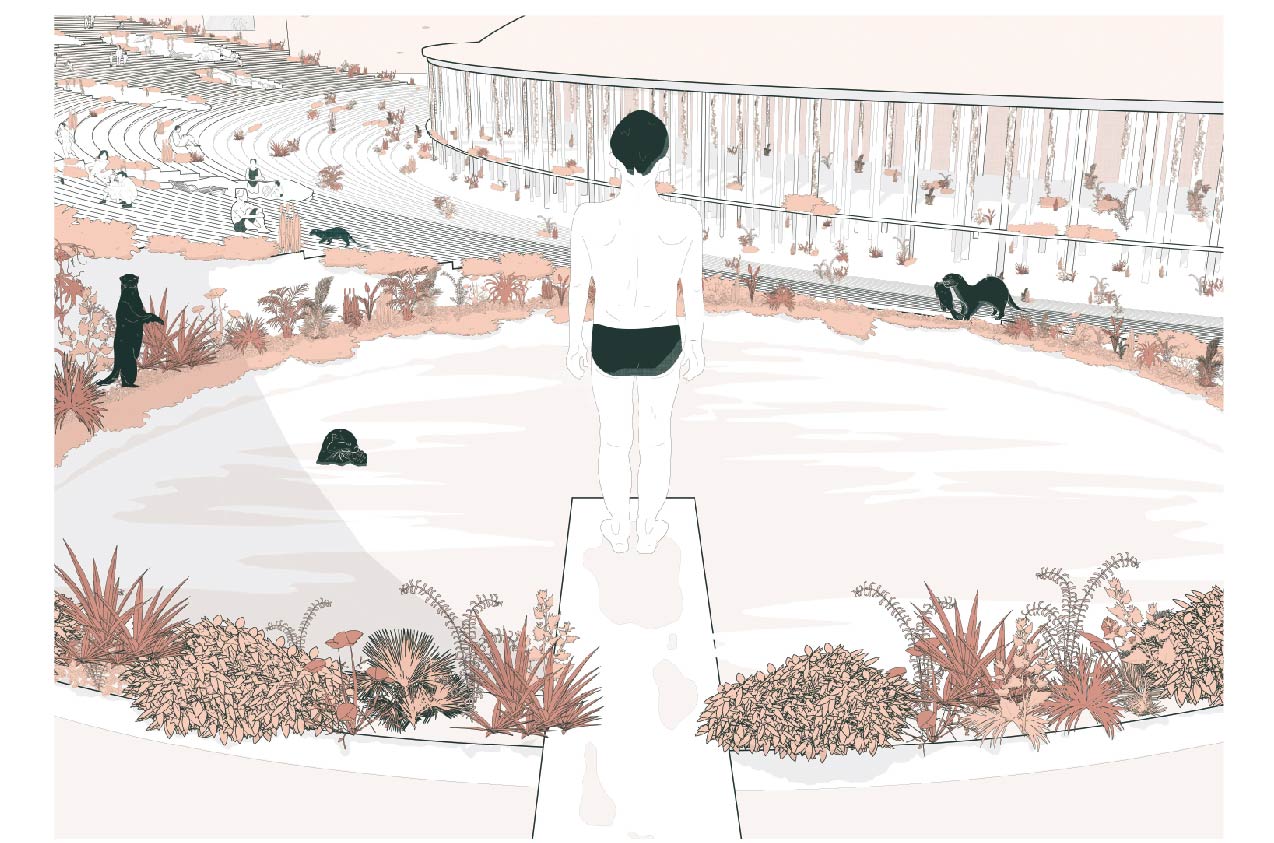





Authoring Nature ; A Fable of Singapore
新加坡 / singapore
張愛雯 / Ai-Wen Cheung
新加坡南部的沿海地區在三十年的填海工程後, ‘製造’了人工的填
海地帶和濱海灣蓄水池。最近幾年,之前隱居的自然保護區的海獺
重現在公共場所。海獺的數量與日俱增,在民眾的守護下快速繁殖,
在排水溝或建築結構的空隙中製造巢穴。我的作品基地是新加坡的
濱海灣。 作品為當地人和海獺種植紅樹林和建造過濾池和水池,也
因此鞏固了濱海灣標誌性的景觀,而成為新加坡旅遊業的地標。 作
品假設新加坡人對自然界動植物的敬仰和愛護。這種愛戴最終被利
用於國際品牌的’人工化’製造。海獺不斷糟蹋旅遊景點和人造景觀,
而景觀又必須為旅客維持樣貌,因此造成人類和自然界的衝突與矛
盾。作品責問新加坡人能否與自然界‘它者’的共存,和對國家長
期打造出膚淺性品牌與名譽的容忍度。
Reconstructing Marina Bay Floating Platform or ‘liquid padang’, the
project provides a complex of mangroves, naturally-filtered pools and
water ponds for locals and otters to gather within a picturesque
landscape of Singapore’s iconic and curated Marina Bay Waterfront.
Placed at a premium site for Singapore tourism, the project displays a
nations’ generosity, friendliness and respect to nature and animals as
a branding for Singapore, at its first stage. As the complex flourishes
successfully, it shows a tension between maintaining this picturesque
and the developing undergrowth of nature. Eventually, the picturesque
reveals a conflict between humankind and nature as the population of
further emphasized. What is revealed beneath the picturesque as the
otters increase beyond control and Singapore’s hubris of nature is
building is systematically dismantled, is an ever-increasing growth and
creation of nests as otters colonize the mechanical pipes and building
structures that shows a “creation” by nature unlike any we expect.
This three part scenario-based thesis thus poses to us a question:
whether we can still be tolerant of our co-existence with nature as the
“other” and at the same time, reveals the underlying truth that the
nature we enjoy is unlike real nature but another construct of
humankind.
More Projects of this Session
展區其他作品